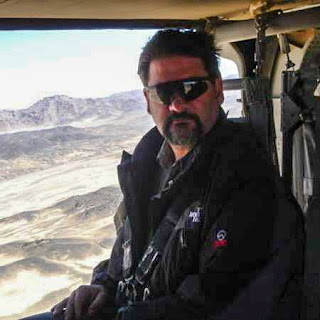Today, Dave is an FAA licensed Part 107 UAS and federal government remote pilot and brings extensive knowledge of FAA and other federal, state and local drone regulations and protocols to the company. Dave developed his skills through extensive operational aerial photography, remote sensing and UAS surveillance work with the military and government agencies. From these beginnings with government systems, EMMU Aerial now provides public safety agencies and organization with specialized UAS training, services and consulting for search and rescue, law enforcement, firefighting, disaster response and more throughout North America. EMMU Aerial is at the forefront of a technological and operational change, focused on reinventing the way we work and look at the world.
Thursday, August 30, 2018
EMMU Aerial’s Managing Director Dave Crago Flies Above the Crowd
Today, Dave is an FAA licensed Part 107 UAS and federal government remote pilot and brings extensive knowledge of FAA and other federal, state and local drone regulations and protocols to the company. Dave developed his skills through extensive operational aerial photography, remote sensing and UAS surveillance work with the military and government agencies. From these beginnings with government systems, EMMU Aerial now provides public safety agencies and organization with specialized UAS training, services and consulting for search and rescue, law enforcement, firefighting, disaster response and more throughout North America. EMMU Aerial is at the forefront of a technological and operational change, focused on reinventing the way we work and look at the world.
Thursday, August 16, 2018
Wrightsville Beach Testing Drones In Water Rescues
The department is testing equipment that allows drones to
carry a lightweight inflatable buoy to swimmers who might be in distress,
according to Wrightsville Beach firefighter Sam Proffitt. He said the drone can
quickly fly a few hundred yards and drop the device.
"It will inflate once it hits the water. They can grab
it and they can either hold it or clip it to them, and then we still have the
other end of the rope on the beach. We take that, wrap it around the hitch on
the back of a truck, and slowly pull that person into shore," Proffitt
said.
The system is meant to assist lifeguards, not replace them,
according to Proffitt. But drones could help law enforcement agencies in towns
and cities where there are no lifeguards on duty.
"If someone gets in distress in a rip current, a lot of
times it falls on a fire department to figure out how they're going to rescue
that person," he said. "And you read a lot of stories where the
rescuer then a lot of times becomes a victim because they're not trained to
perform the rescue, so this could be a great option for them."
Even without the buoys, drones provide an extra set of eyes,
Proffitt said. Local law enforcement agencies across the state have been
experimenting with drones to help find victims of natural disasters, traffic
accidents and other emergencies.
A Wrightsville Beach drone happened to be in the air Tuesday
when the pilot spotted a swimmer in trouble and alerted rescuers. Watch them
respond:
The swimmer was safely pulled from the water. Rescuers have saved hundreds of people along the coast this summer who were caught in suspected rip currents, but at least three have died.
Proffitt said the drone system is promising, but not
perfect. There are tight restrictions on air space and drone regulations that
prohibit pilots from flying them outside their line of sight.
Saturday, August 11, 2018
Will drones change the face of mountaineering and freeriding forever?
-
While looking back at some recent search and rescue operations that utilized drones, I came across a rescue on January 20 th and an earlier...
-
Over the years, EMMU Aerial has helped countless drone pilots in passing their aeronautical knowledge test to get an FAA Part 107 Remote Pil...
-
Aloft Technologies, Inc. (Aloft), a leader in advanced drone software solutions, is thrilled to announce the integration of Automated Spec...





